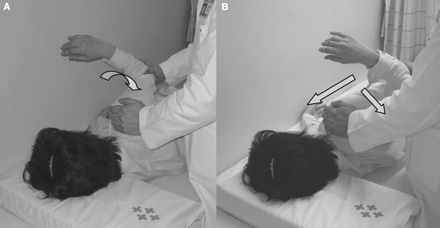The Passive Compression Test: A New Clinical Test for Superior Labral Tears of the Shoulder
Authors: Yang-Soo Kim, Jung-Man Kim, Kee-Yong Ha, Soon Choy, Min-Wook Joo, and Yang-Guk Chung
References: Am J Sports Med 2007 35: 1489-1494
Abstract
Background: Even though there are several physical tests available for superior labrum anterior posterior lesions, there have been very few reports on their accuracy, and none can be regarded as completely predictive for the presence of a superior labrum anterior posterior lesion in the shoulder joint.
Hypothesis: This new clinical test is a useful and accurate technique for detecting superior labral tears in the shoulder joint.
Study Design: Cohort study (diagnosis); Level of evidence, 2.
Methods: This test was conducted independently by 2 physicians before any other diagnostic evaluation. In all cases, the glenohumeral joint was investigated first, and the appropriate treatments were performed on the lesion. A protocol was established to evaluate the sensitivity, specificity, and positive and negative predictive values of this new clinical test. The reproducibility of this test was evaluated with a coefficient.
Results: Sixty-one patients (61 shoulders) were examined with the passive compression test, and all underwent arthroscopic surgery. In 31 patients with a positive passive compression test result, 27 had a superior labrum anterior posterior lesion, and in 30 patients with a negative passive compression test result, 6 had a superior labrum anterior posterior lesion. The sensitivity of the test was 81.8%, and the specificity was 85.7%. The positive predictive value was 87.1%, and the negative predictive value was 80.0%. The coefficient was 0.771 between the 2 independent examiners (P< .01).
Conclusion: The passive compression test is a useful and accurate technique for predicting superior labral tears of the shoulder joint.

The physician rotates the patient’s arm externally with 30° of abduction (A) and then pushes the arm proximally while extending the shoulder (B), which results in the passive compression of the superior labrum onto the glenoid.


